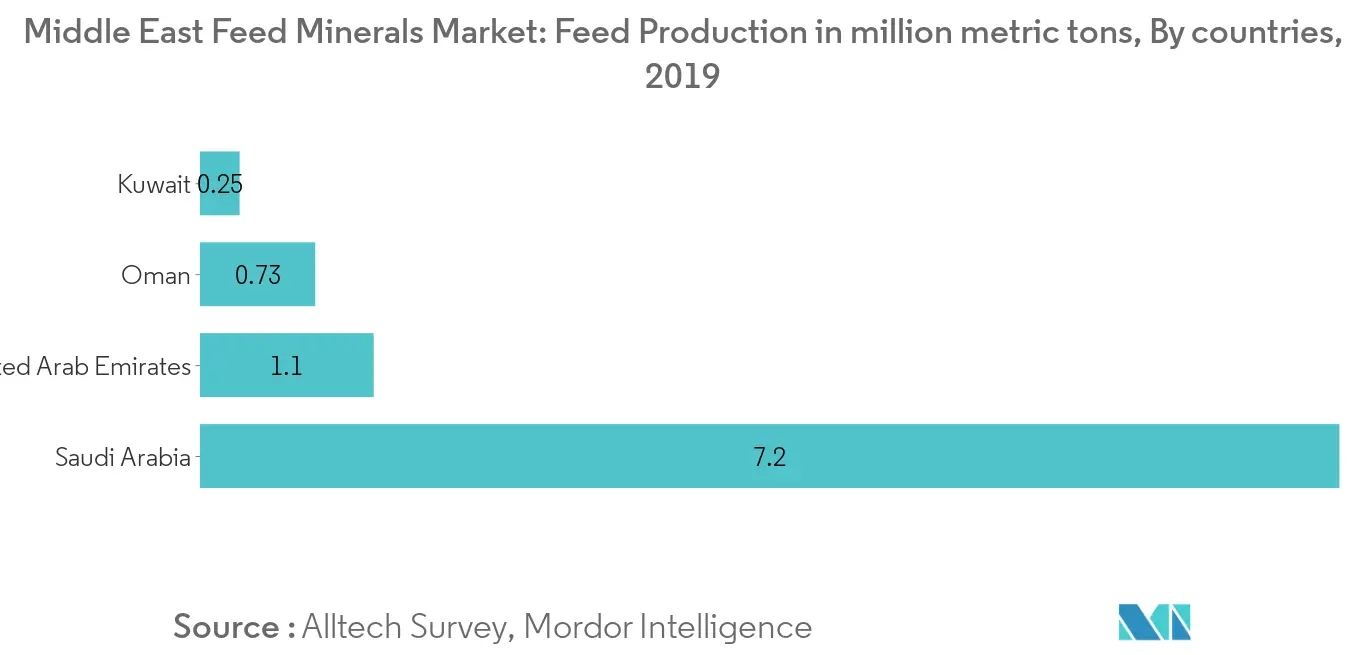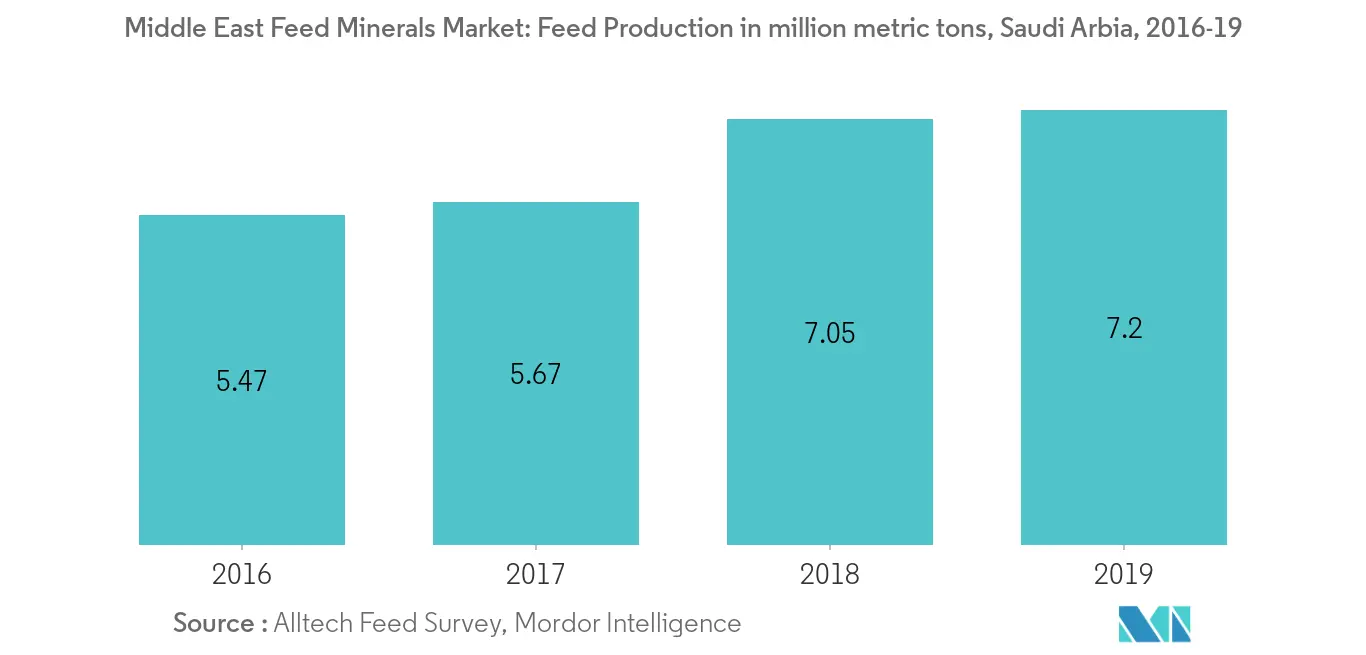Market Trends of Middle East Feed Minerals Industry
This section covers the major market trends shaping the Middle East Feed Minerals Market according to our research experts:
Increasing Meat Demand to Drive the Feed Minerals Market
The enhanced meat production in the middle east is accounted for by the increased demand for locally produced meat by natives. Fast-paced urbanization has enhanced the demand for good quality meat among consumers. These factors are fuelling the growth of the feed minerals market in the Middle East. Industrialization of meat production has prompted producers to supply high quality of meat. For maintaining the quality of meat, mineral feeds are required. The outbreak of diseases in the livestock population tends to reduce the quality of meat. As quoted by the Food and Agricultural Organization, livestock production in the region including Kuwait, Bahrain, Oman, Saudi Arabia, and the United Arab Emirates among others, increased by 3.3% from 294.9 million heads in 2016 to 304.9 million heads in 2018.

Saudi Arabia to Dominate the Compound Feed Minerals Market
A better standard of living and high purchasing power of people in Saudi Arabia has resulted in an increased demand for high-quality meat products. Mineral induced feed protect livestock from diseases and improve the health of them. There has been a shift in preference of consumers towards locally produced chilled meat. According to USDA Foreign Agriculture Service, Saudi consumers prefer 900 to 1100 grams of locally produced poultry per day. The regulations by the Saudi government use more than 70 % of local content by catering services supplying government institutions. Since the culture of Saudi Arabia promotes the serving of meat to its guests as a gesture of hospitality, the demand for good quality meat is rising. The country's livestock production peaked at 208.3 million heads in 2016 and significantly increased to 212.9 million heads in 2018. Despite only a 2.3% intensification in livestock production, the country's feed production increased by 38.4% from 5.2 million metric tons in 2016 to 7.2 million metric tons in 2019. This clearly signifies the acceleration of the compound feed industry in the Saudi Arabian market.


